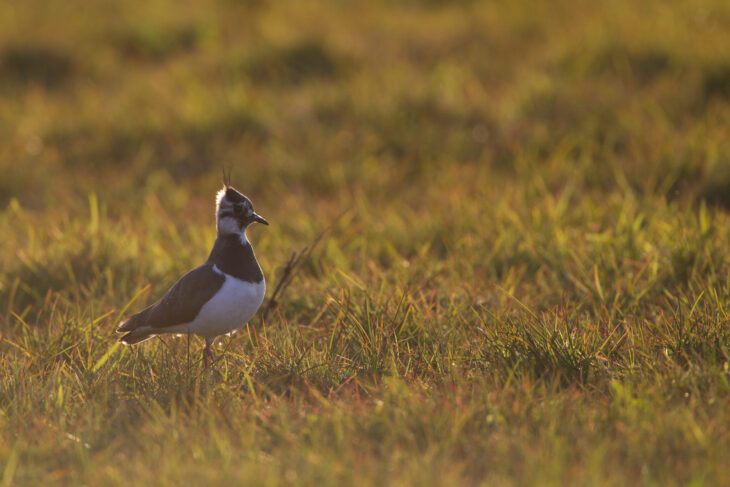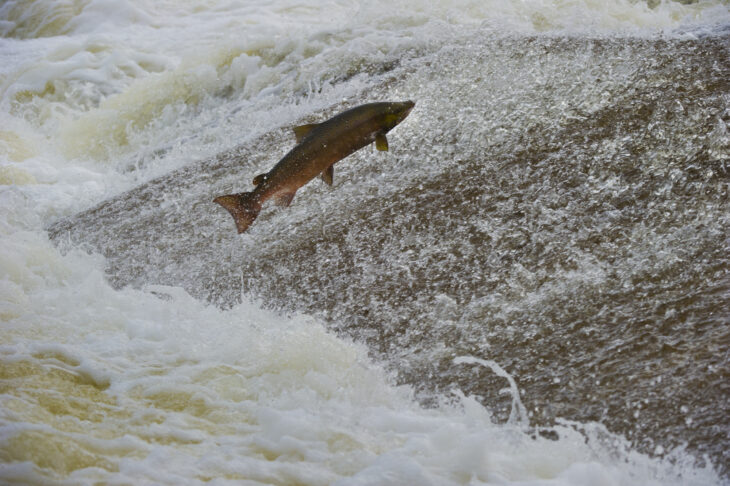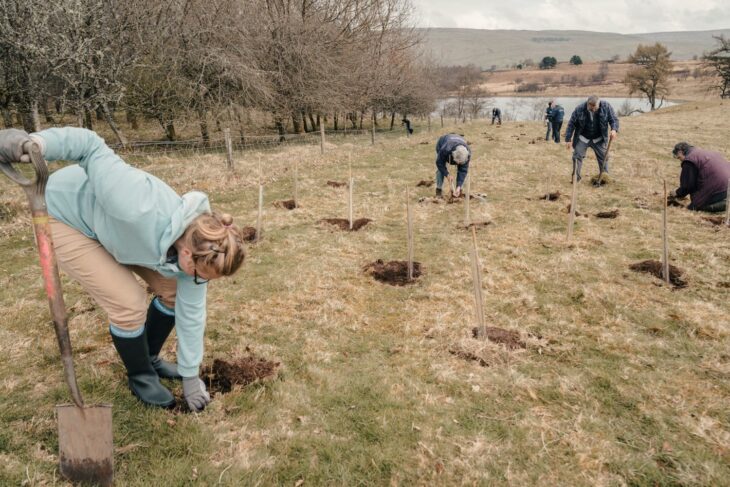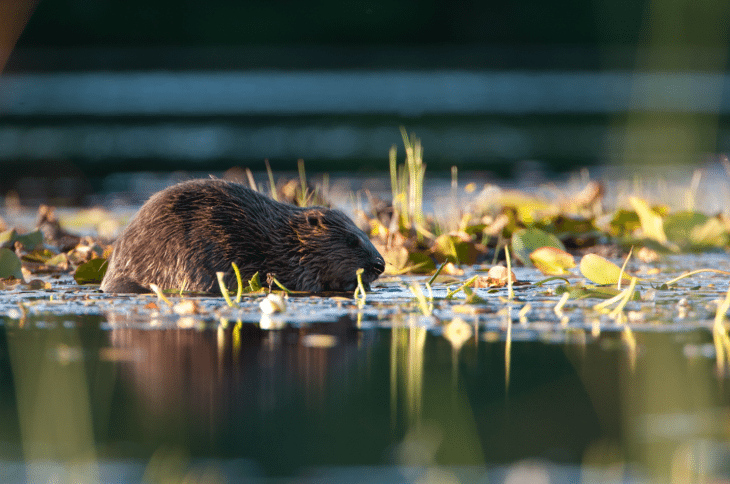Can Wild Isles help turn the tide?
In the final instalment of our Wild Isles blog series, Chief Executive Jo Pike highlights the need to do more to save the wildlife which has been so magnificently featured in this landmark series.
I don’t know how often you come across people who think that nature is doing fine but I’m guessing it’s quite a lot. After all, Scotland is renowned as a place with remarkable wildlife and beautiful landscapes. We see and hear nature around us and forget (or don’t know) how much more of it there was just a few decades ago; meanwhile, issues like deforestation, endangered species and high-profile pollution events such as oil spills can feel like localised problems, remote from our daily lives.
We need to do more to help people understand that nature is in trouble
Maybe that’s why it doesn’t surprise me that there is a gap between perception and reality. It’s certainly the reason why we need to do more to help people understand that nature is in trouble. As the Scottish Government highlights in the draft of the new Scottish Biodiversity Strategy, Scotland is one of the most nature-depleted countries in the world, faring slightly better than other parts of the UK but still in the bottom 25% of nations. That’s pretty bad news. This is against a backdrop of a global nature crisis that has seen a staggering 69% average fall in species population numbers between 1970 and 2018.

So how can we bring this message home?
Wild Isles, the entrancing five-part BBC documentary series with Sir David Attenborough that has just finished airing on BBC1 on Sunday evenings (but is still available on the iPlayer) undoubtedly has a vital role to play here. Covering four key habitats – grasslands, woodlands, freshwater and marine – it’s different from many nature documentaries of the past, partly because it takes place here in the UK (with Scotland featuring prominently). But that’s not all.
I was at primary school when Life on Earth burst onto our screens in 1979. Rewatching episodes on the iPlayer still gives me goosebumps, despite the ‘primitive’ technology and a title sequence that feels more science fiction than natural history. Our fascination with life itself is what creates that sense of awe, not the technology we use to help us ‘connect’ with it, although I’ll return to that topic later. However, even this seminal nature series didn’t talk about the loss of biodiversity and why it matters to us all.
Until fairly recently, nature documentaries rarely mentioned the immense and cumulative threats facing nature all around us every day. They didn’t talk about the impacts of intensive agriculture and how our system of subsidies has incentivised harm rather than financially rewarding stewardship and restoration of the natural world. They haven’t educated us about the fragmentation of habitats and the increasing impacts of climate change on wildlife, the growing threats from invasive non-native species (like giant hogweed, which causes huge harm to wildlife as well as burns to humans), new pests and diseases (like ash dieback) or the hidden pollution entering our air, water and soil (and therefore our food systems) from pesticides, fertilisers, plastics and other pollutants.
We need to demonstrate how everything is connected
Awareness of these issues is an essential piece of the jigsaw, but if our relationship with nature is truly going to improve, we also need to demonstrate how everything is connected: the climate and nature crises; what happens on land and sea; indeed, all the relationships within nature, which collectively make up our life support system.
Luckily, Wild Isles once again comes to our aid. A spectacular Shetland orca hunt in Episode 1 brings to life what the food chain looks like in action. And in Episode 4, thanks to amazing underwater drones, we see some of the extraordinary migratory journey of Atlantic salmon from their spawning ground in the river out to the open sea and back. But there are so many other things that take place in nature that are no less impressive despite not being visible to the naked eye. The brilliant sequence in Episode 2 about the ‘Wood Wide Web’ is a stunning visualisation of the complex network of fungi that form an extensive underground system where information and nutrients are exchanged. (If you enjoyed that as much as I did, you’ll probably love Merlin Sheldrake’s eye-opening book, Entangled Life, on this very subject.)

Technology really has been put to good use in this landmark series, bringing us imagery and insights in a way that breaks new ground. It provides us with an indirect connection with nature but nevertheless an important one.
What really matters about all this connectedness in nature though, is that it’s where we find the potential for nature to recover, if only we let it. One of the great things about nature ‘conservation’, which is just as much about restoring as conserving, is the incredible variety of ways in which people can get involved in helping nature to recover – and how all these efforts are linked.
Thanks to the generosity of the Scottish Wildlife Trust’s members and supporters, our staff and volunteers are working hard to protect the wildlife seen on Wild Isles, from seabird surveys undertaken by our seasonal rangers on Handa Island and the Isle of Eigg, to golden eagle nest monitoring and Arctic alpine plant surveys by our Rahoy Hills Reserve Ranger, as well as our famous Osprey Watch at Loch of the Lowes, operated by our Perthshire Ranger and over 60 volunteers to support successful breeding of these wonderful birds. We’re also proud of our Wetland Bird Survey (WeBs) undertaken by our Angus Ranger to monitor non-breeding waterbirds in the UK, as well as other important monitoring by rangers and volunteers.
At the same time, the Scottish Wildlife Trust is helping to save red squirrels, having led the Saving Scotland’s Red Squirrels project for well over a decade now. The project is a partnership that is working to ensure red squirrels continue to be a part of Scotland’s special native wildlife. While 75% of the UK’s remaining red squirrels are found in Scotland, their numbers have fallen drastically in recent decades and without continued action (including a clear commitment from the government and its agencies), they could disappear altogether. Fortunately, our data tells us that these efforts are paying off.
Based in Fife, our conservation grazing of wildflower meadows with sheep and cattle is helping biodiversity to flourish, while our Irvine to Girvan Nectar Network is working with farmers in Ayrshire to support diverse grasslands and hedgerows. Recently, new hedgerow and grassland management guides have been produced by the Scottish Wildlife Trust in collaboration with farmers and SAC Consulting, part of Scotland’s Rural College.
Meanwhile, our Reserves staff and volunteers across the country regularly undertake vital removal of damaging invasive plants like giant hogweed, Himalayan balsam and Japanese knotweed, as well as planting trees, for example at our Loch Ardinning Wildlife Reserve in Stirling.

These are just a few examples of the practical conservation happening on the ground across Scotland, all of which take place alongside our policy advocacy work, public engagement and a wide range of partnership projects, large and small.
We need the political will to make change happen
But action from ordinary citizens and nature conservation charities on their own is not enough. We need the political will to make change happen.
Whilst it may not be surprising that there are still people unaware of the crisis facing our natural world, it’s different when it comes to politicians, where the lack of awareness (as opposed to lack of expertise) can sometimes feel quite shocking. What’s striking is how many decision-makers seem unaware of what’s at stake, making decisions whose consequences may be irreversible for future generations and which will impact our economy, our way of life, our wellbeing and the survival of so many of the species with which we share this planet.
If you’re wondering what this lack of awareness looks like in practice, a critically important current example is the Retained EU Law (Revocation and Reform) Bill, introduced by the UK Government (and strongly opposed by the Scottish and Welsh Governments), which urgently needs to be stopped if we are to avoid the biggest potential loss of environmental protections in a generation. You can get involved in a joint campaign by Wildlife Trusts across the UK by sending a postcard to your MP and letting them know how crucial it is that they speak up to #DefendNature. I hope you can take a moment to do this.
Ultimately, a lot needs to happen if we are to tackle the nature crisis effectively before it’s too late. Good work has been happening in Scotland over recent months to create a new Scottish Biodiversity Strategy that will guide these efforts. What’s essential now is that we get the implementation plans and the funding in place to deliver these changes. And this is where charities like the Scottish Wildlife Trust and others need to play an active part.
Partnership working is the cornerstone of the Scottish Wildlife Trust’s work. Our Living Landscapes in Coigach and Assynt, Edinburgh and Cumbernauld, along with Saving Scotland’s Red Squirrels, our leading role in reintroducing beavers to Scotland, newer pioneering initiatives such as Riverwoods – all these are examples of why the Scottish Wildlife Trust’s work has never been more important.

Most of all, partnership working is about identifying our shared interests and working towards shared goals in ways that work for everyone. There will always be differences of opinion, and this can be healthy, but by focusing on the common ground we can achieve so much more.
Meanwhile, the Scottish Government has an opportunity to show leadership by putting nature restoration and climate change at the heart of all its activities, developing a new farm funding system that works for nature, climate and people; following through on the commitment to designate 10% of Scotland’s seas as Highly Protected Marine Areas to protect our marine life and Scotland’s fishing industry; ensuring the proper resourcing and oversight of nature-based solutions and nature networks in our urban areas; valuing and defending Scotland’s protected sites such as Coul Links, and ending the sale of peat for horticulture so that we can stop damaging our peatlands and focus on restoring them.
The reality is that the nature conservation sector is under more pressure than ever and needs core government funding for ongoing activities such as the removal of non-native species, looking after protected areas and undertaking ecological surveying. Funding bodies also need to recognise the importance of ongoing work, rather than focusing disproportionately on the need for new initiatives.
Fifty-nine years ago this week, the Scottish Wildlife Trust was established to “advance the conservation of Scotland’s biodiversity for the benefit of present and future generations”. The fight for nature is ongoing and we have never been more needed than we are now.
One of my favourite parts in the whole of Wild Isles comes towards the end of Episode 5. It takes place at night-time, using infrared cameras to capture what can only be described as magical moments with Sir David watching a young Manx shearwater take its first flight.
It’s a moving reminder that people are part of nature, in many ways echoing the iconic scenes from Life on Earth of a younger David Attenborough spending time with a family of gorillas. The poignancy of how much wildlife we’ve lost since that seminal 1970s series can hardly go unnoticed by anyone who’s been paying attention. Let’s hope that Wild Isles can renew our collective resolve to halt the decline and begin the recovery.
Jo Pike
Chief Executive
Join us
Our reserves are free to access but as a charity, we rely on the support of nature lovers like you to keep our critical conservation work going. Join today from just £3 per month and help to protect Scotland’s wildlife for the future.
Help protect Scotland’s wildlife
Our work to save Scotland’s wildlife is made possible thanks to the generosity of our members and supporters.
Join today from just £3 a month to help protect the species you love.
Preface
In the final instalment of our Wild Isles blog series, Chief Executive Jo Pike highlights the need to do more to save the wildlife which has been so magnificently featured …
